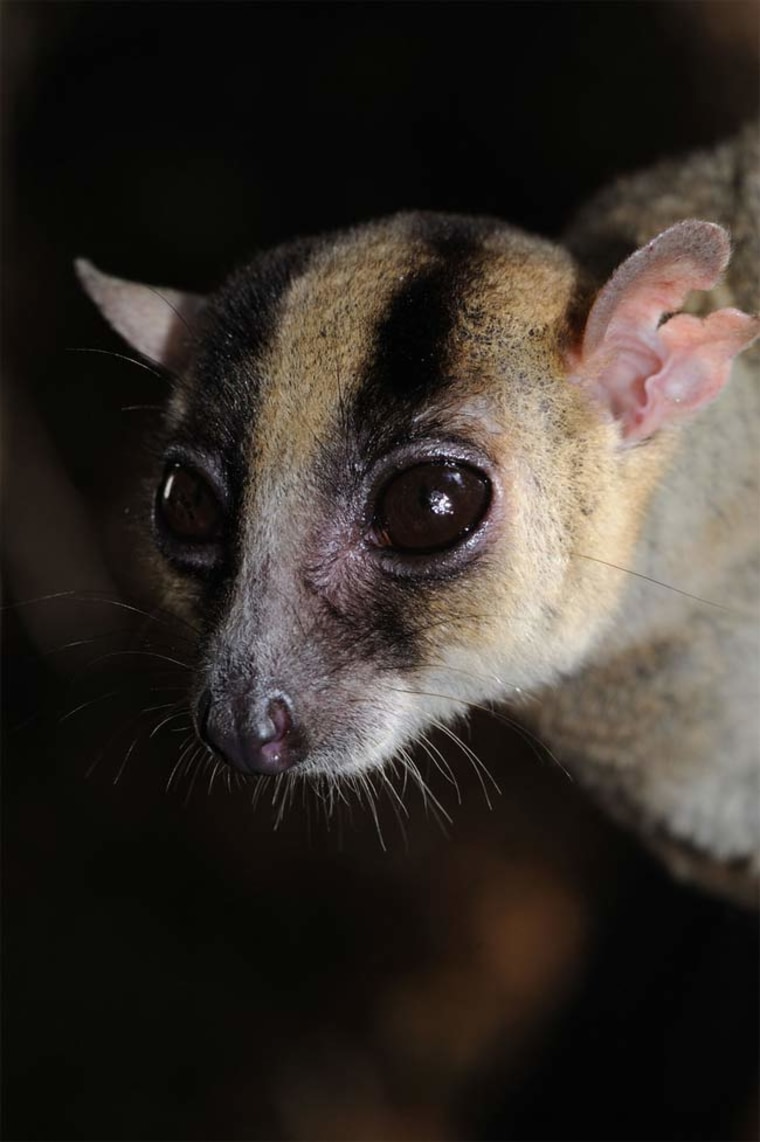A new long-tongued, squirrel-sized species of lemur has been discovered in Madagascar, researchers report Monday.
The new creature doesn't have a species name yet, but is of the genus Phaner, otherwise known as fork-marked lemurs. These lemurs get their name from a black, Y-shaped line that starts above each eye and joins at the top of the head. The long-tongued species has a unique head-bobbing move that showed up in the flashlight beam as discoverers searched the treetops for a glimpse of the animal. [ Image of new lemur ]
Conservation International president and primate expert Russ Mittermeier first spotted the lemur in 1995 during an expedition to northeastern Madagascar. He knew that his find was likely an unknown species, but he wasn't able to follow up until October 2010, when he led scientists and a BBC film crew into the area.
The team set out just after sunset when the Phaner are most vocal and heard one calling close to camp at the top of a tree. The Phaner was difficult to catch as it moved quickly through the treetops, so the team ran through the dense forest following the calls. Eventually, they caught sight of the animal in torchlight but had to wait until it moved into an open area to get a clean shot with a tranquilizer gun. Once a dart had found its target, one of the trackers quickly shimmied up the tree to retrieve it.
The adult male lemur was kept safe and sedated overnight so the team could examine it in detail and take samples in daylight. The researchers took blood samples for genetic analysis and slipped a microchip under its skin for identification and monitoring. Then they returned the lemur to the forest.
The animal has large hands and feet for gripping trees, and a long tongue for slurping up its diet of nectar. The new lemur also boasts specialized teeth for scraping bark off trees to get to the sweet gum beneath.
"This is yet another remarkable discovery from the island of Madagascar, the world's highest priority biodiversity hotspot and one of the most extraordinary places in our planet," Mittermeier said in a statement. "It is particularly remarkable that we continue to find new species of lemurs and many other plants and animals in this heavily impacted country, which has already lost 90 percent or more of its original vegetation."
The lemur will be shown for the first time on BBC's Decade of Discovery special program Dec. 14.
